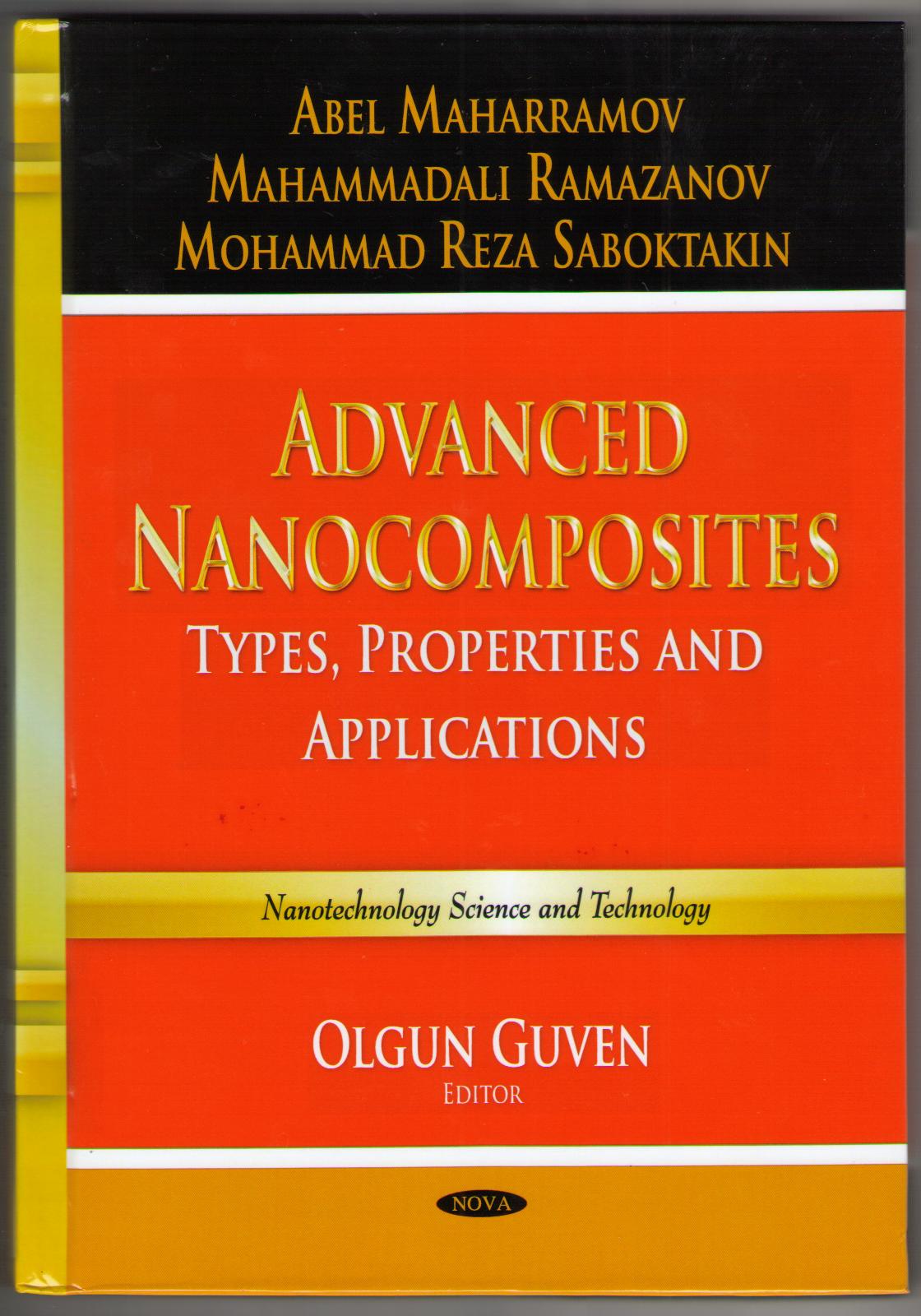BSU scientists’ monograph was published in the U.S.
A monograph “Advanced Nanocomposites: Types, Properties and Applications” was published in the U.S. (Nova publishers) in December, 2013. Authors of the mentioned scientific research are academic Abel Maharramov, professor Mahammadali Ramazanov and Mohammad Reza Saboktakin (Baku State University). Editor is Olgun Guven, Chemistry Department, Hacettepe University (Ankara, Turkey).
Book Description:
The field of nanotechnology is one of the most popular areas for current research
and development in basically all technical disciplines. This obviously includes
polymer science and technology and even in this field the investigations cover a
broad range of topics. This would include microelectronics (which could now be
referred to as nanoelectronics) as the critical dimension scale for modern devices
now below 100 nm. Other areas include polymer-based biomaterials, nanoparticle
drug delivery, miniemulsion particles, fuel cell electrode polymer bound catalysts,
layer-by-layer self-assembled polymer films, electrospun nanofibers, imprint
lithography, polymer blends and nanocomposites. Even in the field of
nanocomposites, many diverse topics exist including composite reinforcement,
barrier properties, flame resistance, electro-optical properties, cosmetic
applications, and bactericidal properties. Nanotechnology is not new to polymer
science as prior studies before the age of nanotechnology involved nanoscale
dimensions but were not specifically referred to as nanotechnology until recently.
Nanoparticles are defined as particulate dispersions or solid particles with a size in
the range of 10-1000nm. The drug is dissolved, entrapped, encapsulated or
attached to a nanoparticle matrix. Depending upon the method of preparation,
nanoparticles, nanospheres or nanocapsules can be obtained. Nanocapsules are
systems in which the drug is confined to a cavity surrounded by a unique polymer
membrane, while nanospheres are matrix systems in which the drug is physically
and uniformly dispersed. Nanotechnology offers unique approaches to probe and
control a variety of biological and medical processes that occur at nanometer
length scales, and is expected to have a revolutionary impact on biology and
medicine. Among the approaches for exploiting nanotechnology in medicine,
nanoparticles offer some unique advantages as sensing, image enhancement, and
delivery agents. Several varieties of nanoparticles with biomedical relevance are
available including, polymeric nanoparticles, metal nanoparticles, liposomes,
micelles, quantum dots, dendrimers, and nanoassemblies. To further the
application of nanoparticles in disease diagnosis and therapy, it is important that
the systems are biocompatible and capable of being functionalized for recognition
of specific target sites in the body after systemic administration. We have
discussed the novel nanocomposites and nanoparticles from various applications
and drug delivery systems for cancer therapy.
Press and Information Department, January 15, 2014.

